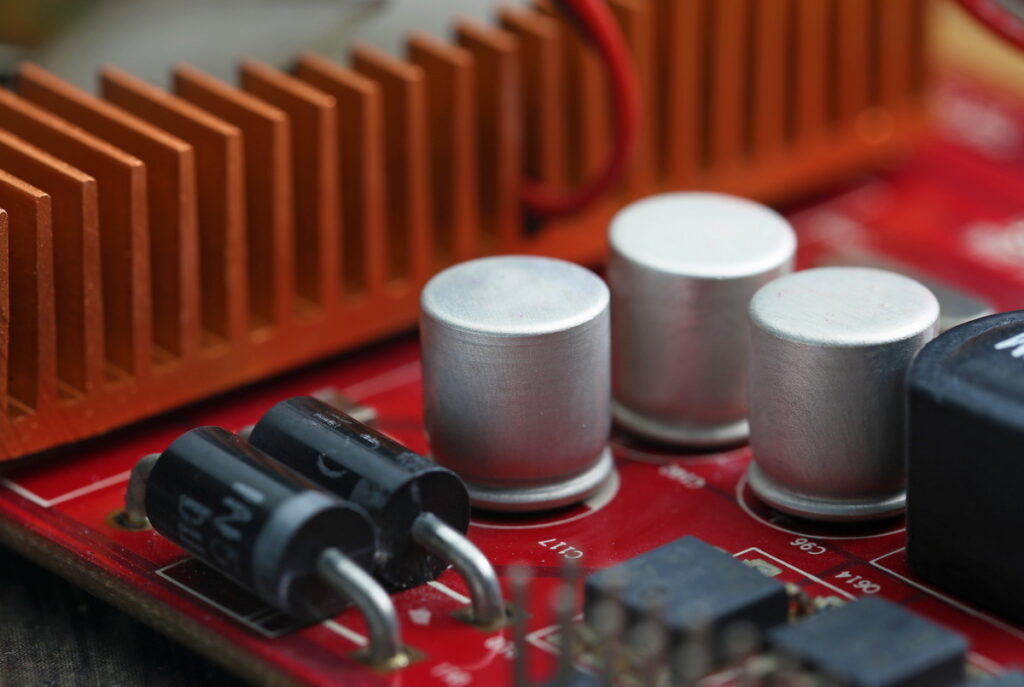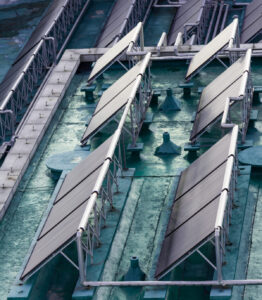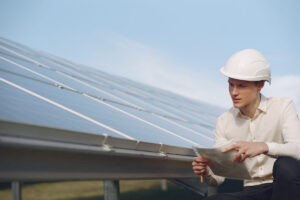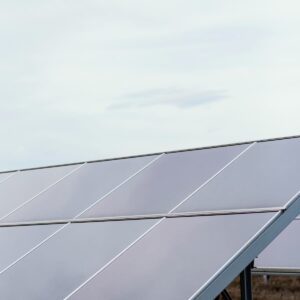In an era defined by technological leaps and innovation, the construction industry stands at the forefront of a dynamic transformation propelled by sensor technology. Sensors, defined as devices that detect and respond to input from the physical environment, have rapidly evolved into indispensable tools revolutionizing how construction projects are conceived, executed, and maintained.
The integration of sensors within construction frameworks has witnessed exponential growth, with statistics highlighting their profound impact. According to industry reports by Research and Markets, the global construction sensor market is projected to reach a staggering valuation of over $6 billion by 2027, reflecting an upward trajectory driven by advancements in sensor capabilities and their diversified applications.
Types of Sensors within the construction realm encompass a myriad of functionalities, serving as the cornerstone of data acquisition and analysis. These devices, ranging from strain gauges and environmental sensors to sophisticated IoT-connected systems, play a pivotal role in monitoring structural health, ensuring environmental compliance, enhancing safety measures, and optimizing resource utilization.
This overview delves deep into the multifaceted types of sensors in construction, exploring their historical evolution, critical applications, associated challenges, and promising future trends. From their humble origins as basic monitoring tools to their current state as integral components of modern construction practices, types of sensors have undergone a remarkable metamorphosis, redefining industry standards and propelling the sector toward unprecedented levels of efficiency, sustainability, and technological integration.
Table of Contents
Overview of Sensor Technology in Construction
Sensor technology has undergone a remarkable evolution, becoming a linchpin in revolutionizing the construction industry. In this overview, we delve into the pivotal role each types of sensors play, its historical progression, and its critical importance in modern construction practices.
Historical Context
The utilization of each types of sensors in construction is not a recent phenomenon. Historically, rudimentary sensor mechanisms were employed for basic functionalities, primarily for monitoring temperature, pressure, or simple structural characteristics. However, the paradigm shifted dramatically with technological advancements, paving the way for sophisticated sensor systems tailored for construction applications.
Importance in Modern Construction
Today, sensors stand as indispensable tools within construction frameworks, serving multifaceted purposes. They serve as the eyes and ears of construction sites, providing real-time data crucial for decision-making processes. These sensors encompass a wide spectrum, ranging from structural health monitoring systems to environmental sensors and safety devices.
Structural Health Monitoring
One of the most pivotal applications of types of sensors in construction is structural health monitoring. Types of sensors embedded within infrastructure continuously monitor and analyze structural integrity, detecting anomalies or weaknesses that might lead to potential failures. These sensors measure strain, vibration, deformation, and other structural parameters, ensuring early detection of issues for timely intervention and maintenance.
Environmental Monitoring
Types of sensors in construction also play a significant role in monitoring environmental conditions. These sensors track parameters like temperature, humidity, air quality, and noise levels. Such data aids in assessing the impact of construction activities on the surrounding environment and helps in adhering to environmental regulations.
Suggested article to read: Environmental Sensors; Comprehensive Guide 2024
Safety Sensors
Safety remains a paramount concern in construction. Some types of sensors contribute significantly by providing real-time data to ensure worker safety. From detecting hazardous gases to monitoring proximity to dangerous equipment or areas, these sensors mitigate risks and enable proactive safety measures.
Suggested article to read: Construction Safety Sensors; Guide to 2024
Integration and Advancements
The integration of sensors into construction practices has brought about significant advancements. The advent of IoT (Internet of Things) and AI-driven systems has heightened the capabilities of sensors. They now interconnect seamlessly, transmitting and analyzing vast amounts of data in real-time, facilitating predictive maintenance and optimizing construction processes.
In essence, types of sensors have evolved from rudimentary tools to indispensable components within the construction industry. Their ability to gather real-time data, ensure structural integrity, monitor environmental impact, and enhance safety measures has reshaped construction practices. Moving forward, the continued innovation in sensor technology is poised to further revolutionize the industry, making construction processes more efficient, cost-effective, and sustainable.

Types of Sensors
Covering the various types of sensors used in the construction industry comprehensively requires an in-depth exploration. Here’s an overview that highlights the primary types and their functionalities within construction frameworks.
1. Strain and Displacement Sensors
Strain and displacement types of sensors represent the bedrock of structural health monitoring within the construction industry. Their fundamental role lies in gauging and interpreting critical data that determines the stability and integrity of infrastructural elements.
Strain Gauges: Among these sensors, strain gauges stand out as essential tools for assessing stress and strain within construction materials. These devices measure the deformation, or strain, experienced by materials like concrete or steel under applied forces. By detecting minute changes in the material’s dimensions, strain gauges provide invaluable insights into the stress distribution across structures. This data helps engineers and construction professionals evaluate the performance of materials under various conditions, ensuring they operate within safe stress limits.
Displacement Sensors: Displacement types of sensors, including the highly sensitive LVDTs and accelerometers, serve as the vigilant sentinels of structural movements. LVDTs measure linear displacements with remarkable precision, offering accurate insights into shifts or alterations in a structure’s position. Meanwhile, accelerometers specialize in detecting vibrations or accelerations experienced by the construction elements. These sensors meticulously record even the subtlest movements or vibrations, enabling the prediction of potential structural weaknesses or malfunctions before they escalate into critical issues.
The synergy between strain gauges and displacement sensors plays a pivotal role in structural health monitoring. Strain gauges meticulously capture the stress-strain relationship within materials, while displacement types of sensors meticulously detect and interpret even the slightest deviations in structural positioning or vibrations. This combined data forms the backbone of informed decision-making processes, enabling timely interventions, maintenance, or structural modifications to ensure the longevity and safety of construction projects. Together, they offer a comprehensive understanding of a structure’s behavior under various loads and environmental conditions, facilitating proactive measures to safeguard against structural failures or weaknesses.
2. Temperature and Humidity Sensors
Temperature and humidity types of sensors represent a critical subset of sensors within the construction industry, offering indispensable functionalities that directly impact material integrity and structural stability. These types of sensors serve as vigilant custodians, meticulously monitoring and regulating environmental parameters crucial for construction materials and project success.
At the heart of their functionality lies their pivotal role in ensuring the ideal curing conditions for construction materials, notably concrete. Optimal curing is imperative for the strength, durability, and overall quality of concrete structures. Temperature and humidity types of sensors diligently oversee this process, maintaining the requisite conditions that foster proper hydration and curing, mitigating issues like cracking, shrinking, or weakened structural integrity.
Moreover, these types of sensors stand as vigilant guardians against environmental extremes that could jeopardize construction projects. They vigilantly monitor temperature fluctuations within structures, serving as early warning systems against potentially damaging conditions. In regions prone to temperature variations, types of sensors act as sentinels, promptly alerting construction teams to deviations beyond acceptable limits. This early detection facilitates timely interventions, preventing structural deformities or material degradation caused by extreme temperatures.
Additionally, their role in moisture level surveillance is indispensable. Moisture, a perennial adversary in construction, can wreak havoc if left unmonitored. Temperature and humidity types of sensors meticulously track moisture levels, averting potential damage caused by excessive dampness or water infiltration. By promptly identifying areas susceptible to moisture accumulation or detecting moisture fluctuations, these types of sensors aid in preemptive measures, safeguarding against mold, rot, or compromised structural integrity.
In essence, temperature and humidity types of sensors transcend their status as mere monitors; they are custodians of construction material well-being and structural robustness. Their vigilance ensures not just the longevity and durability of structures but also minimizes the risks associated with environmental factors, fostering construction practices grounded in resilience, longevity, and quality assurance.
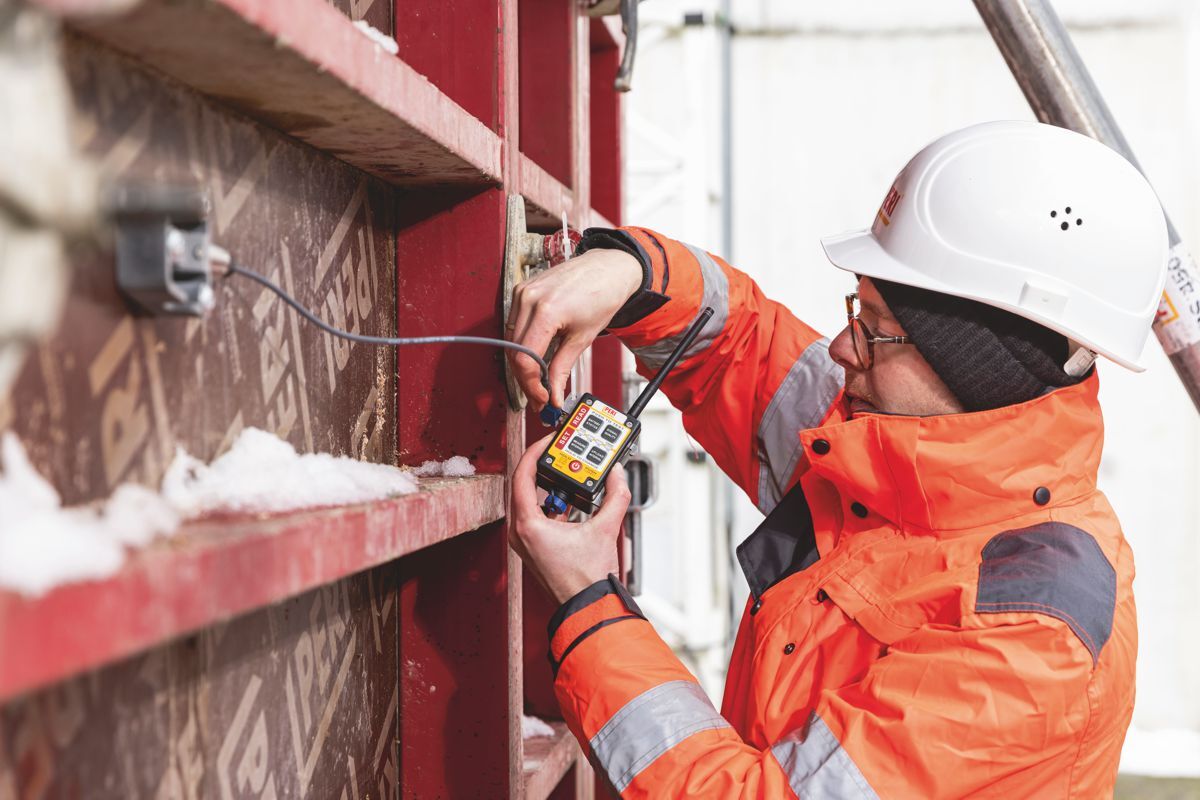
3. Pressure Sensors
Pressure types of sensors serve as fundamental components in evaluating the forces acting upon structures, playing a crucial role in ensuring their stability and integrity. These types of sensors are specifically designed to measure the forces or pressures exerted on various elements within construction, offering invaluable insights into the structural behavior and potential risks of overloading.
In the construction domain, pressure types of sensors are strategically employed to gauge and monitor the loads borne by critical elements such as building foundations, bridges, tunnels, and other architectural components. By precisely measuring the forces exerted on these structural elements, pressure types of sensors provide engineers and construction professionals with real-time data essential for assessing the structural integrity and safety margins of these crucial constructions.
For instance, in the context of building foundations, pressure types of sensors are instrumental in determining the distribution of loads borne by the foundation. They assist in analyzing how the weight of the building and external forces are dispersed onto the foundation, aiding engineers in optimizing the design and ensuring the foundation’s capacity to support the imposed loads effectively.
Similarly, in the case of bridges and tunnels, pressure types of sensors play a pivotal role in continuous monitoring. These types of sensors detect and measure the forces acting on different sections of the structure, enabling engineers to assess the structural health, identify potential areas of stress concentration, and mitigate risks associated with excessive loads or unexpected pressure changes.
By providing accurate and real-time information about the pressure distribution and fluctuations within these structures, pressure types of sensors serve as proactive tools for risk assessment and maintenance planning. Their ability to detect anomalies in pressure patterns or loads helps in predicting potential structural vulnerabilities, allowing for timely interventions to prevent overloading and mitigate the risk of structural failures.
Moreover, the data collected by pressure types of sensors aids in optimizing construction designs, enabling engineers to make informed decisions regarding material specifications, load-bearing capacities, and overall structural safety measures. This proactive approach to monitoring and analyzing pressure data ensures the longevity, safety, and reliability of critical infrastructure within the construction industry.
4. Level Sensors
Level types of sensors, a crucial component within the sensor array utilized in the construction sector, specialize in discerning and measuring the inclination or tilt of structures, rendering them instrumental in ensuring structural stability and safety. These types of sensors encompass diverse types, among which inclinometers and tilt sensors stand out prominently for their distinct functionalities and applications.
In the construction industry, inclinometers and tilt types of sensors serve as vigilant guardians, diligently monitoring the angular orientation or tilt of various structures. Their application extends beyond conventional building frameworks to encompass a spectrum of environments, particularly hilly terrains or areas prone to landslides. Here, their significance becomes paramount, as they serve as sentinels, continuously evaluating the subtlest shifts in slope stability that could potentially herald impending hazards.
These types of sensors operate on the principle of detecting deviations from the horizontal or vertical axes, providing real-time data on any tilting or angular variations within the structures. By precisely gauging the degree of inclination or tilt, they offer invaluable insights into the stability of embankments, retaining walls, bridges, or any structures situated in terrains susceptible to gravitational shifts.
Their role in landslide mitigation and prevention cannot be overstated. In regions prone to such geological phenomena, these types of sensors function as early warning systems, detecting even minor deviations in slope angles that could signify imminent risks. By promptly alerting construction teams or relevant authorities, they enable proactive measures to be taken, potentially averting disasters and safeguarding lives and properties.
Furthermore, in the context of infrastructure development on hilly terrains, these types of sensors assume a pivotal role in ensuring the integrity of roads, tunnels, or railways. Continuous monitoring of slope stability through these types of sensors allows for timely interventions, such as reinforcement measures or slope remediation strategies, preempting potential structural failures and ensuring the longevity of critical infrastructure.
The adoption of inclinometers and tilt types of sensors underscores a proactive approach in construction practices, emphasizing not only structural integrity but also the preservation of environmental safety. Their precision in detecting and assessing minute changes in inclination contributes significantly to risk mitigation strategies, fostering a safer and more resilient built environment in regions prone to gravitational instabilities.
Suggested article to read: Top 10 Wearable Sensors for Workers in Construction
5. Motion and Proximity Sensors
Motion types of sensors and proximity detectors represent crucial components within construction safety and security frameworks, operating on the principle of detecting physical presence or movement in their surroundings.
Motion Sensors: Elevating Site Security
Motion types of sensors serve as vigilant sentinels across construction sites, vigilantly monitoring for any unauthorized movements or intrusions. These types of sensors, equipped with state-of-the-art technology, utilize various mechanisms like infrared, microwave, or ultrasonic waves to detect any shifts or alterations within their designated coverage area. They function as a proactive security measure, triggering alerts or alarms upon detecting unexpected movements, potential breaches, or unauthorized access within the construction premises. By swiftly identifying and alerting personnel to any suspicious activities, motion types of sensors fortify security protocols, mitigating the risk of theft, vandalism, or unauthorized entries that could compromise site safety or project integrity.
Proximity Sensors: Safeguarding Workers and Equipment
In the realm of occupational safety, proximity types of sensors emerge as invaluable safeguards, particularly concerning the interaction between workers and hazardous equipment or machinery. These types of sensors are adept at detecting the presence of individuals or objects within a predefined distance from specific equipment or danger zones. By establishing virtual safety perimeters, proximity sensors serve as vigilant guardians, promptly signaling alerts or activating safety measures when workers encroach upon potentially perilous areas. These types of sensors contribute significantly to accident prevention by initiating immediate halts in machinery operations, activating warning signals, or triggering emergency shutdowns, thereby averting potential accidents or injuries caused by inadvertent proximity to hazardous machinery.
Integration for Comprehensive Site Safety
Integrating motion and proximity types of sensors within construction environments underscores a comprehensive approach to safety and security. By synergizing their functionalities, these types of sensors create a robust safety net, simultaneously addressing security breaches and ensuring worker safety. Their collaborative efforts foster a proactive safety culture, where preemptive measures and rapid response mechanisms work cohesively to mitigate risks, fortify site security, and prioritize the well-being of both personnel and property within the dynamic construction landscape.
6. Gas and Environmental Sensors
Gas and environmental types of sensors represent a crucial subset of sensor technology within the construction industry, functioning as vigilant guardians of both worker well-being and environmental stewardship. These sophisticated types of sensors serve as sentinels, meticulously monitoring the composition of the air within construction sites, scrutinizing for any telltale signs of hazardous gases or pollutants that could pose a threat to human health or the surrounding ecosystem.
Their primary mandate lies in ensuring the safety and health of on-site personnel by diligently detecting and signaling the presence of detrimental gases. Among these hazardous compounds, types of sensors vigilantly track concentrations of carbon monoxide, a silent yet lethal gas capable of causing asphyxiation at elevated levels. Additionally, these types of sensors are attuned to volatile organic compounds (VOCs), which emanate from various construction materials and can lead to respiratory issues or long-term health complications when exposure levels surpass safe thresholds.
The vigilance of gas and environmental types of sensors extends beyond safeguarding human health; it encompasses a commitment to environmental sustainability. These types of sensors serve as custodians of the natural surroundings, meticulously assessing air quality to prevent the release of harmful pollutants into the atmosphere. By detecting and alerting construction teams to the presence of pollutants or harmful gases, they facilitate swift interventions to mitigate potential environmental impact, aligning construction practices with responsible environmental stewardship.
Moreover, these types of sensors play an instrumental role in adhering to regulatory standards and compliance protocols established to safeguard both human health and the environment. Their meticulous monitoring and real-time alert systems enable construction teams to promptly implement corrective measures, ensuring adherence to stringent environmental regulations and fostering a culture of proactive environmental responsibility within the construction landscape.
In essence, gas and environmental types of sensors serve as silent guardians, championing both worker safety and environmental preservation within the dynamic and often hazardous environment of construction sites. Their vigilance and proactive detection mechanisms not only safeguard the well-being of on-site personnel but also epitomize a conscientious commitment to sustainable and responsible construction practices.
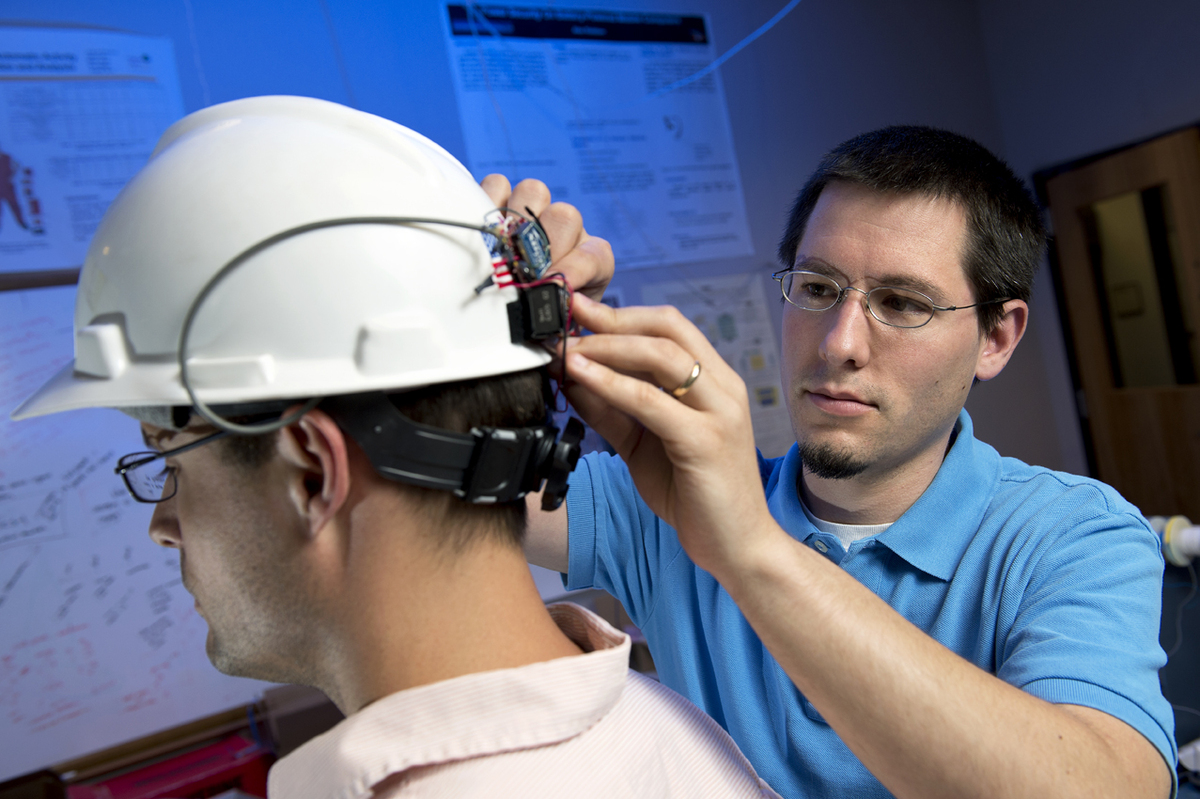
7. GPS and Geolocation Sensors
GPS (Global Positioning System) sensors represent a cornerstone in modern construction, offering a robust framework for tracking and managing resources across expansive construction sites. These types of sensors leverage satellite technology to pinpoint the exact location of construction equipment, vehicles, and personnel, providing real-time data crucial for streamlining operations. By harnessing GPS sensors, construction firms optimize logistical processes, enhancing productivity, and minimizing downtime.
The integration of GPS sensors within construction fleets enables precise tracking and monitoring of heavy machinery, vehicles transporting materials, and even personnel movements. This real-time location data empowers project managers to efficiently allocate resources, anticipate potential bottlenecks, and optimize routes, thereby reducing idle time and enhancing overall project timelines.
In parallel, geolocation types of sensors serve as complementary tools, offering precise mapping and surveying capabilities crucial for construction planning and execution. These types of sensors employ a range of technologies, including GPS, RFID (Radio-Frequency Identification), and GIS (Geographic Information System), to create accurate geographical maps and survey data. They provide construction teams with detailed spatial information, aiding in site planning, layout design, and ensuring accurate placement of infrastructure elements.
Geolocation types of sensors play a pivotal role in land surveying, enabling precise measurements, contour mapping, and identification of topographical features. This detailed spatial data assists architects, engineers, and project managers in visualizing the construction site, identifying potential obstacles, and planning infrastructure development in adherence to geographic nuances.
Moreover, the synergy between GPS and geolocation types of sensors fosters an ecosystem of data-driven decision-making. By amalgamating precise location information with environmental factors and project requirements, construction stakeholders gain comprehensive insights. This holistic understanding allows for optimized resource allocation, improved site safety measures, and enhanced project efficiency.
The combination of GPS and geolocation types of sensors epitomizes the convergence of technology and construction, offering a comprehensive solution for site management, logistics optimization, and accurate spatial planning. As construction firms increasingly embrace these sensor-driven technologies, the industry moves towards a future characterized by heightened efficiency, streamlined operations, and informed decision-making.
8. Camera and Imaging Sensors
The integration of camera and imaging types of sensors in the construction industry has ushered in a new era of visual data acquisition, fundamentally altering the way projects are monitored, tracked, and inspected. These sophisticated sensors, equipped with cutting-edge imaging technology, play a pivotal role in enhancing the efficiency, accuracy, and safety of construction processes.
Site Monitoring: Camera and imaging types of sensors act as vigilant eyes on construction sites, continuously capturing visual data in real-time. This data provides stakeholders, including project managers, engineers, and contractors, with a comprehensive view of the ongoing activities. Site monitoring involves the deployment of fixed cameras strategically positioned across the construction site, offering a detailed and dynamic perspective of various work zones. This real-time visual feedback enables prompt decision-making, facilitates the identification of potential issues, and ensures that the project progresses in alignment with the predefined timeline.
Progress Tracking: Construction projects are dynamic endeavors with multiple concurrent activities taking place. Camera and imaging types of sensors play a crucial role in tracking the progress of these activities. By capturing high-resolution images or video footage at regular intervals, these types of sensors create a visual timeline of the construction process. This not only aids in assessing the project’s advancement but also provides a valuable historical record. Project managers can utilize this visual documentation to evaluate productivity, identify bottlenecks, and refine project timelines for subsequent phases.
Inspection and Quality Assurance: Drones equipped with cameras have emerged as powerful tools for inspection and quality assurance in the construction industry. These unmanned aerial vehicles navigate through the airspace above construction sites, capturing high-definition images and videos. This aerial perspective is particularly valuable for surveying large areas efficiently and inspecting structures that may be challenging to reach manually. From assessing the integrity of building facades to inspecting the installation of critical infrastructure components, camera-equipped drones contribute to a comprehensive and detailed inspection process. This not only ensures compliance with quality standards but also enhances safety by minimizing the need for workers to access potentially hazardous areas.
The marriage of camera and imaging types of sensors with construction practices represents a paradigm shift in how the industry harnesses visual data. As technology continues to advance, these types of sensors are poised to become even more sophisticated, offering higher resolutions, advanced image analysis capabilities, and increased autonomy. The result is a construction landscape where decision-making is informed by rich, real-time visual insights, ultimately leading to more efficient, transparent, and successful project outcomes.
9. Acoustic and Vibration Sensors
Acoustic and vibration types of sensors represent a sophisticated branch of sensor technology within the construction sector, finely attuned to detecting subtle yet crucial indicators of structural integrity and operational performance. These types of sensors are designed with acute sensitivity, capable of perceiving even the slightest variations in sound frequencies and mechanical oscillations.
Their role in the construction industry extends far beyond merely discerning audible signals or detecting physical movements. Acoustic sensors possess the remarkable ability to capture minute sound patterns, identifying anomalies that might signify structural stress, material degradation, or the onset of machinery malfunctions. Simultaneously, vibration sensors are adept at monitoring the oscillations and resonance within building frameworks or mechanical components, serving as sentinels for potential faults or irregularities.
Their significance in predictive maintenance cannot be overstated. By continuously monitoring acoustic signatures or vibrational patterns, these types of sensors facilitate the early identification of issues such as structural fatigue, equipment wear, or impending failures. This proactive approach empowers construction professionals to intervene swiftly, allowing for preemptive maintenance measures that mitigate risks, minimize downtime, and avert costly repairs or catastrophic breakdowns.
Moreover, these types of sensors play a pivotal role in establishing a robust framework for condition-based maintenance strategies. By collecting and analyzing data over time, they contribute to the creation of predictive models. These models enable construction managers and engineers to forecast maintenance schedules accurately, optimizing resource allocation, and prolonging the lifespan of both structures and machinery.
In essence, acoustic and vibration types of sensors act as vigilant guardians, continuously monitoring the health and performance of construction elements. Their ability to discern subtle cues, coupled with their role in facilitating predictive maintenance, not only safeguards structural integrity but also bolsters operational efficiency, reinforcing the foundation of a resilient and sustainable construction industry.
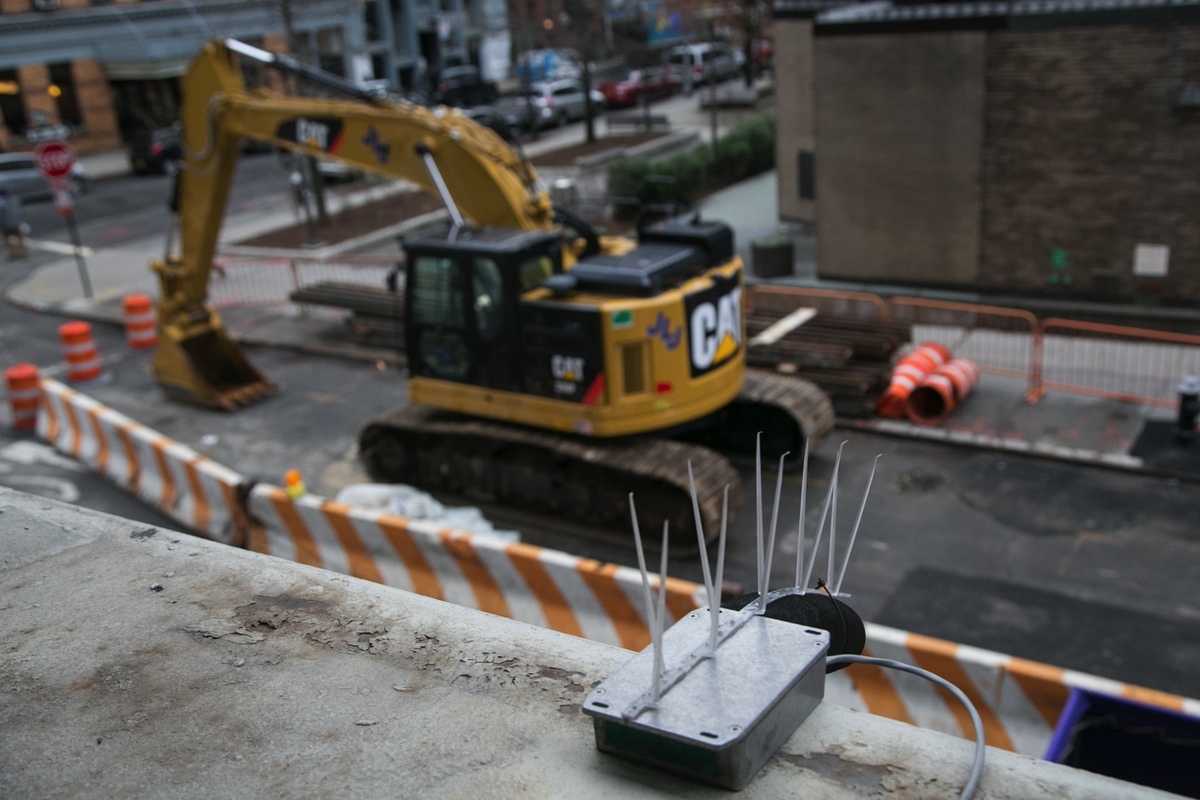
10. Fiber Optic Sensors
Fiber optic types of sensors represent a cutting-edge advancement in sensor technology within the construction industry, offering unparalleled sensitivity, versatility, and precision. These types of sensors operate on the principle of utilizing optical fibers to detect and measure various parameters, showcasing remarkable capabilities in real-time data acquisition, particularly in environments where conventional sensors face limitations.
Sensitivity and Precision
One of the standout features of fiber optic types of sensors lies in their exceptional sensitivity. They can detect minuscule changes in strain, temperature fluctuations, and pressure variations with unparalleled accuracy. This sensitivity makes them ideal for monitoring critical structural components, offering insights into subtle shifts that might otherwise go unnoticed.
Diverse Applications
The versatility of fiber optic types of sensors extends across a wide spectrum of applications within construction. In scenarios where traditional sensors prove challenging to install or operate effectively, fiber optic types of sensors emerge as the go-to solution. They find application in monitoring the structural integrity of bridges, tunnels, high-rise buildings, and other infrastructural elements where space constraints or harsh environmental conditions pose challenges.
Real-time Monitoring and Response
The real-time capabilities of fiber optic sensors are invaluable in construction scenarios where immediate responses to changing conditions are paramount. By providing instantaneous data on strain, temperature, and pressure variations, these types of sensors enable proactive measures, allowing for swift interventions and preventative maintenance to uphold structural safety and integrity.
Non-intrusive and Reliable
A significant advantage of fiber optic sensors is their non-intrusive nature. Their installation often involves embedding optical fibers within construction materials without compromising the structural integrity. This non-invasive approach ensures reliable, continuous monitoring without causing any disruptions to the construction process.
Enhanced Safety and Predictive Maintenance
Incorporating fiber optic types of sensors enhances safety protocols by providing early warnings of potential structural weaknesses or anomalies. Their ability to detect subtle changes allows for predictive maintenance strategies, mitigating risks of structural failures and minimizing downtime by addressing issues before they escalate.
Future Innovations and Potential
The evolution of fiber optic sensors continues, with ongoing research exploring novel applications and advancements. Innovations in nanotechnology and materials science hold promise for even more sophisticated types of sensors with increased sensitivity and expanded functionalities, further solidifying their role as indispensable tools in construction.
In essence, fiber optic types of sensors represent a technological marvel within the construction industry, offering unparalleled sensitivity, versatility, and real-time monitoring capabilities. Their application not only ensures structural integrity but also contributes significantly to proactive maintenance, safety enhancement, and the overall efficiency of construction projects. As technology advances, these types of sensors are poised to redefine standards, ushering in an era of precision and reliability in construction monitoring and maintenance practices.
These sensors collectively contribute to a smarter, safer, and more efficient construction landscape. Their integration facilitates real-time data acquisition, ensuring structural integrity, safety, and optimal resource management. As technology evolves, these types of sensors continue to redefine construction practices, fostering innovation and sustainability within the industry.
Suggested article to read: Sensors in Construction: Ultimate Guide 2024
Applications in the Construction Industry
The applications of sensors in the construction industry have transformed the way projects are planned, executed, and maintained. These technological innovations have become integral components, offering a wide range of benefits that enhance efficiency, safety, and overall project success. Here, we explore key applications that highlight the impact of sensors in the construction sector.
1. Structural Health Monitoring (SHM)
One of the primary applications of sensors in construction is Structural Health Monitoring (SHM). Sensors, such as strain gauges, accelerometers, and displacement types of sensors, are strategically placed on structures to assess their condition continuously. Real-time data on factors like deformation, vibrations, and stress help detect potential issues, allowing for proactive maintenance and preventing catastrophic failures. SHM ensures the longevity and safety of structures, making it an invaluable tool in construction projects.
2. Environmental Monitoring
Sensors play a crucial role in monitoring environmental conditions at construction sites. Temperature and humidity sensors ensure optimal conditions for concrete curing, preventing issues like cracking. Additionally, air quality sensors detect harmful gases and pollutants, safeguarding the health of workers and minimizing environmental impact. These sensors contribute to sustainable construction practices by promoting responsible environmental stewardship.
3. Safety Sensors and Proximity Detection
Ensuring the safety of construction workers is paramount. Motion types of sensors, proximity sensors, and cameras are employed to monitor construction sites for potential hazards. Motion types of sensors detect unauthorized movement, enhancing security, while proximity sensors prevent accidents by alerting workers when they are near dangerous equipment. These safety applications significantly reduce the risk of on-site incidents, promoting a secure working environment.
4. Geospatial Technology and GPS Tracking
The integration of GPS technology and geospatial types of sensors has revolutionized construction logistics. GPS sensors track the location of construction equipment and vehicles in real-time, optimizing transportation routes and resource allocation. Geolocation sensors aid in precise surveying and mapping, providing accurate data for site planning and development. These technologies streamline project management, enhance efficiency, and reduce operational costs.
5. Camera and Imaging Sensors for Inspection
Camera and imaging sensors, including those mounted on drones, offer a visual perspective that is instrumental in construction inspection and monitoring. Drones equipped with cameras provide aerial views, facilitating the inspection of large areas and structures that are challenging to access manually. This not only improves the accuracy of inspections but also expedites the process, saving time and resources.
6. Acoustic and Vibration Sensors for Equipment Health
Acoustic and vibration sensors are employed to monitor the health of construction equipment. By detecting abnormal vibrations or sounds, these sensors can identify potential equipment malfunctions or fatigue, enabling predictive maintenance. This proactive approach minimizes downtime, extends the lifespan of machinery, and contributes to overall project efficiency.
7. Gas and Environmental Sensors for Hazardous Conditions
Construction sites can be exposed to various hazardous gases and environmental conditions. Gas sensors, including those for detecting carbon monoxide and VOCs, ensure that workers are not exposed to harmful substances. Environmental sensors provide data on factors such as noise levels and air quality, contributing to a safer and healthier working environment.
The applications of sensors in the construction industry represent a paradigm shift in how projects are planned and executed. From ensuring the structural integrity of buildings to enhancing safety measures and optimizing logistics, sensors have become indispensable tools. As technology continues to advance, the construction industry can expect further innovations that will contribute to more sustainable, efficient, and safer construction practices.

Challenges and Limitations
In the realm of construction, while sensors offer immense advantages, their integration poses certain challenges and limitations that influence their implementation. Understanding these hurdles is crucial for harnessing sensor technology effectively. Here, we explore the primary challenges and limitations encountered in deploying sensors within the construction industry.
1. Cost Implications
One of the foremost challenges is the cost associated with sensor deployment. Acquiring, installing, and maintaining sensor systems can be financially demanding, especially for smaller construction firms or projects with tight budgets. The initial investment for high-quality sensors and their installation might deter widespread adoption, impacting the scalability of sensor technology in construction.
2. Compatibility and Integration
The construction industry operates with various systems and technologies. Ensuring compatibility and seamless integration of diverse sensor systems with existing construction frameworks, software, or machinery can be complex. Interoperability issues may arise, hindering the smooth functioning of integrated sensor networks.
3. Data Overload and Management
Sensors generate vast amounts of data, often in real-time. Handling this influx of data poses a challenge in terms of storage, processing, and analysis. Without robust data management strategies, the sheer volume of information can overwhelm construction teams, making it difficult to derive actionable insights.
4. Reliability and Accuracy
The reliability and accuracy of sensor data are critical for informed decision-making. Sensors may encounter calibration issues, drift, or malfunctions, leading to inaccurate readings. Maintaining sensor accuracy throughout their lifespan is crucial to ensure the credibility of the data they provide.
5. Power Supply and Energy Efficiency
Many sensors require continuous power sources to function effectively. Implementing power sources or batteries for sensors in remote construction sites or during the early stages of construction where power infrastructure is limited can be challenging. Additionally, optimizing sensors for energy efficiency to prolong battery life without compromising performance remains an ongoing concern.
6. Environmental Factors
Construction sites present harsh environmental conditions that can affect sensor performance. Dust, debris, extreme temperatures, moisture, and vibrations can impact sensor accuracy and longevity. Designing sensors robust enough to withstand these conditions without compromising functionality is a significant challenge.
7. Complexity in Implementation and Training
Deploying sensor technology often demands specialized skills and knowledge. Construction teams may require training to handle, install, maintain, and interpret sensor data effectively. The complexity of these systems may pose a barrier, requiring additional investment in training and education.
8. Privacy and Security Concerns
With sensors collecting sensitive data, concerns regarding privacy and security emerge. Unauthorized access to sensor data or breaches in the sensor network’s security can compromise the integrity of the construction project, leading to potential risks or data misuse.
9. Regulatory and Standards Compliance
Compliance with industry regulations and standards poses another challenge. Ensuring that sensors and their data collection adhere to regulatory requirements, especially in sectors like safety and environmental monitoring, adds complexity to the deployment process.
10. Limited Standardization
The lack of standardized protocols and frameworks for sensor technology in construction impedes uniformity across projects. Standardization is essential for interoperability, data sharing, and the seamless integration of sensor systems.
Mitigation Strategies:
- Cost-effective Solutions: Research and development for affordable sensor solutions.
- Investment in Training: Training programs to enhance workforce skills in sensor technology.
- Robust Data Management: Implementing robust data management systems to handle sensor-generated data efficiently.
- Interdisciplinary Collaboration: Collaboration between construction and technology experts for effective sensor integration.
- Focus on Standards: Advocating for industry-wide standardization of sensor technologies.
Understanding and addressing these challenges is pivotal for maximizing the potential of sensor technology in the construction industry. Overcoming these hurdles will pave the way for more widespread adoption, fostering innovation, efficiency, and safety within construction practices.

Future Trends
Anticipating future trends in sensor technology within the construction industry unveils a landscape shaped by continuous innovation, technological convergence, and a focus on sustainability. These emerging trends are poised to revolutionize construction practices, elevating efficiency, safety, and environmental consciousness.
1. Advancements in IoT and Connectivity
The Internet of Things (IoT) will continue to be a driving force in construction. Sensors embedded in various construction elements will communicate seamlessly through interconnected networks, enabling real-time data collection, analysis, and decision-making. This connectivity will facilitate predictive maintenance, optimize resource allocation, and enhance overall project management.
2. AI and Machine Learning Integration
AI-driven analytics and machine learning algorithms will play a pivotal role in sensor data interpretation. These technologies will sift through vast datasets generated by sensors, identifying patterns, predicting structural vulnerabilities, and recommending preventive measures. This predictive capability will revolutionize maintenance strategies, reducing downtime and improving asset lifespan.
3. Augmented Reality (AR) and Virtual Reality (VR) Applications
AR and VR technologies will transform construction site planning, design, and training processes. Sensors combined with AR/VR tools will allow for immersive visualization, aiding in a better understanding of site layouts, detecting clashes in designs, and providing on-site training simulations for improved safety practices.
4. Advancement in Sensor Miniaturization and Integration
Continued miniaturization of sensors will result in smaller, more efficient, and cost-effective sensor solutions. These compact sensors will be easier to deploy across construction sites, facilitating widespread implementation without compromising functionality.
5. Energy Harvesting and Sustainability
Innovations in energy harvesting technologies will make sensors more self-sufficient. Integration of solar, kinetic, or other renewable energy sources within sensors will reduce reliance on external power sources, enhancing sustainability and reducing the environmental footprint of sensor deployment.
6. Smart Materials and Embedded Sensors
The development of smart materials with embedded sensors will revolutionize construction materials themselves. These materials will have inherent sensing capabilities, allowing for continuous monitoring of structural health, eliminating the need for external sensors, and providing real-time feedback on material integrity.
7. Blockchain for Data Security and Transparency
Blockchain technology will enhance the security and transparency of sensor-generated data. Decentralized ledgers will ensure data integrity, preventing tampering and unauthorized access. Smart contracts powered by blockchain could automate agreements and payments based on sensor-derived information.
8. Robotics and Autonomous Construction
Sensors will be integral in enabling robotics and autonomous machinery at construction sites. These robots equipped with sensors will execute tasks like site inspection, material handling, and even construction processes, enhancing efficiency and safety while reducing labor-intensive tasks.
9. Wearable and Personalized Sensors
The rise of wearable technology will introduce personalized sensors for construction workers. These sensors will monitor vital signs, fatigue levels, and exposure to hazardous conditions, prioritizing worker safety and health.
10. Focus on Data Analytics and Predictive Insights
The emphasis will shift towards leveraging sensor data analytics for predictive insights. Construction firms will rely heavily on predictive modeling and data-driven decision-making, optimizing construction schedules, resource allocation, and risk mitigation strategies.
Implementing Future Trends:
- Investment in R&D: Continuous research and development in sensor technology.
- Collaboration and Partnerships: Collaborative efforts between tech firms, construction companies, and research institutions.
- Regulatory Adaptation: Adaptation of regulations to accommodate evolving sensor technology standards.
- Skill Development: Training programs to equip the workforce with the skills necessary to manage advanced sensor systems.
Embracing these future trends in sensor technology will shape a construction industry characterized by efficiency, precision, sustainability, and enhanced safety standards. As these innovations unfold, the construction sector stands poised for a transformative leap into a technologically driven future.
Conclusion
In the ever-evolving landscape of construction, sensor technology emerges as a pivotal force driving innovation and reshaping industry norms. Over the years, types of sensors have transcended their conventional roles, evolving into indispensable assets within construction frameworks. This comprehensive overview underscores their historical evolution, present-day significance, diverse applications, associated challenges, and promising future trends.
From the humble beginnings of rudimentary functionalities to the advent of sophisticated sensor systems, the journey of sensors in construction has been transformative. These technological advancements have elevated sensors to the status of indispensable tools, acting as the eyes and ears of construction sites. They provide real-time data critical for informed decision-making, spanning structural health monitoring, environmental impact assessment, and ensuring heightened safety measures.
The applications of sensors within the construction domain are diverse and far-reaching. They encompass structural health monitoring, environmental surveillance, safety reinforcement, logistical optimization, equipment health assessment, and more. These applications have redefined construction practices, ensuring structural integrity, fostering sustainability, and significantly enhancing safety standards.
Despite their myriad benefits, sensor integration presents a spectrum of challenges. Cost implications, compatibility issues, data overload, reliability concerns, and environmental factors pose hurdles to widespread adoption. Addressing these challenges requires concerted efforts, investment in research, robust data management systems, and skill enhancement within the workforce.
The future of sensor technology in construction holds promise, driven by IoT connectivity, AI integration, AR/VR applications, miniaturization, energy harvesting, smart materials, and blockchain security. These trends indicate a paradigm shift towards efficiency, sustainability, and data-driven decision-making, revolutionizing construction practices.
In conclusion, types of sensors have transcended their conventional roles, becoming catalysts for a technologically driven revolution in construction. Their integration facilitates smarter, safer, and more efficient practices, marking a transformative leap into an era of precision, sustainability, and heightened efficacy. Embracing these advancements and overcoming associated challenges will pave the way for a construction landscape characterized by innovation, efficiency, and sustainability. As sensor technology continues to evolve, the construction industry stands poised to harness its full potential, shaping a brighter, more technologically empowered future.
Suggested article for reading:
Artificial Intelligence or AI in Building; Guide to 2024
AI in Project Management; Ultimate Guide 2024
13 Best AI Tools for Project Management in 2024
Resources:
ElectronicsHub | Thomasnet | RealPars | Robu.in | Geeks for Geeks | Finoit | Freeeway | Circuit Digest
For all the pictures: Freepik | Highways Today | Phys.org | Bloomberg.com | Michigan Engineering News

